Bagan
Bagan, also known as Pagan, is an ancient city located in central Myanmar (Burma) and is one of the country's top tourist destinations. It was the capital of the Pagan Kingdom from the 9th to the 13th centuries and is known for its incredible collection of more than 2,200 Buddhist temples, pagodas, and monasteries. Here are some interesting facts about Bagan:
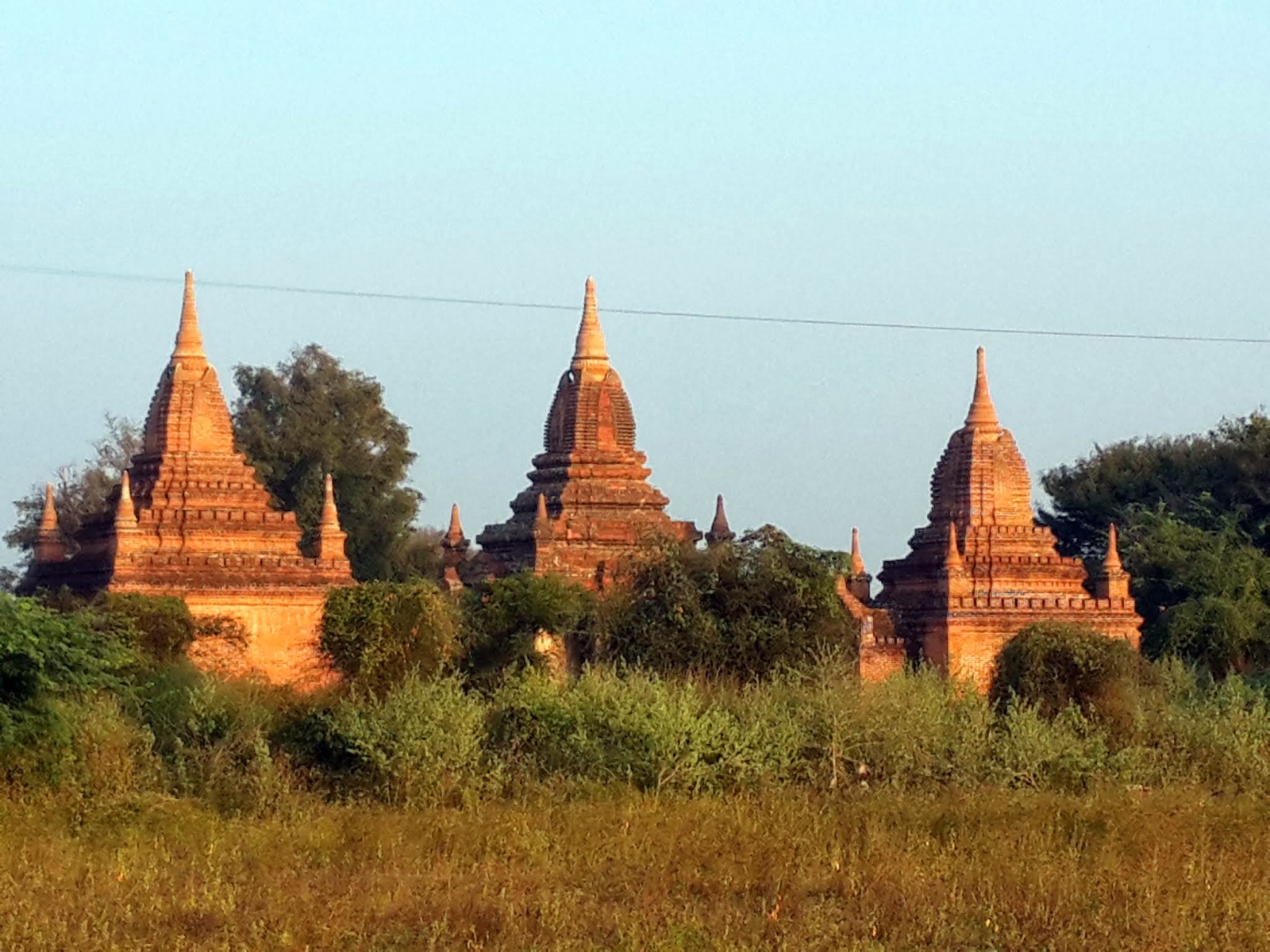
Here you can read part 1 of this article about our discovering tour to Burma - From Shwedagon Pagoda to Inle Lake: Discovering the Charms of Burma (part I)
- Bagan is home to the largest concentration of Buddhist temples, pagodas, and ruins in the world, with some estimates suggesting that there were originally as many as 10,000 structures.
- The temples and pagodas were built between the 11th and 13th centuries, during the height of the Pagan Kingdom's power and influence.
- Many of the temples were built by the kings of the Pagan Dynasty, who competed with each other to build the most impressive and elaborate structures.
- The temples range in size from small and simple to large and ornate, with some reaching heights of up to 60 meters (197 feet).
- The most famous temple in Bagan is the Ananda Temple, which is considered to be one of the finest examples of early Bagan architecture.
- The temples were built using local brick and stucco, which were then decorated with intricate carvings, paintings, and plasterwork.
- Bagan was declared a UNESCO World Heritage Site in 2019, after a long campaign by Myanmar's government and heritage groups.
- Bagan is also known for its hot-air balloon rides, which offer a unique perspective on the temples and pagodas from above.
- Despite its popularity as a tourist destination, Bagan remains a deeply spiritual place, and many locals still practice Buddhism at temples and pagodas.
- The best time to visit Bagan is during the dry season (November to February) when temperatures are cooler and the skies are clear.
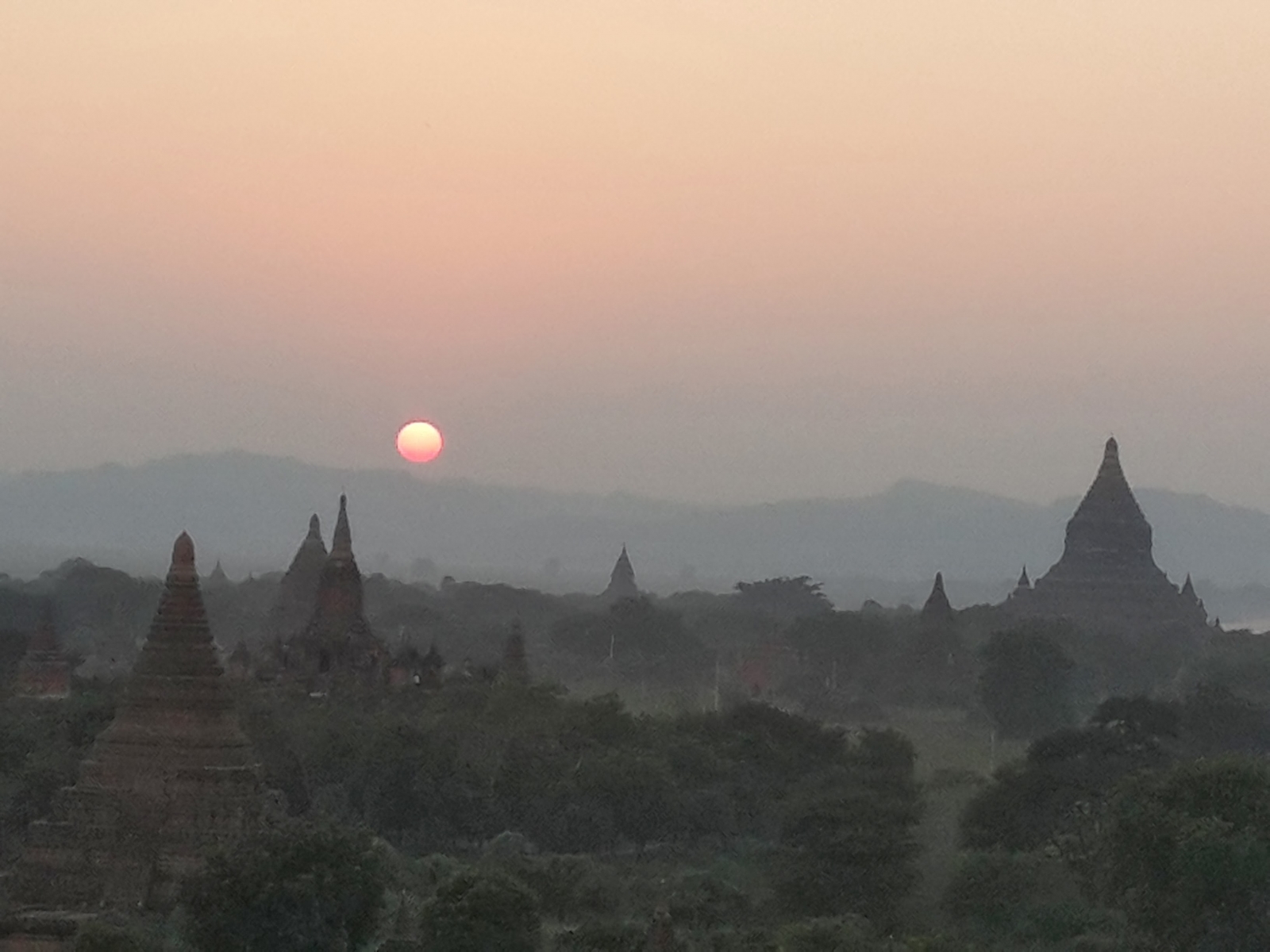
Buddhist Stupas in Bagan
Bagan is famous for their vast collection of ancient Buddhist temples and stupas, which number over 2,000 in total. Many of these structures date back to the 11th and 12th centuries when Bagan was the capital of the Pagan Kingdom. The stupas, or pagodas, in Bagan are typically bell-shaped structures, with a spire or stupa on top. They are constructed from brick or stone, with many featuring intricate carvings, elaborate decorations, and painted frescoes. The stupas range in size from small shrines to massive structures that are over 60 meters tall.
One of the most famous stupas in Bagan is the Shwezigon Pagoda. It was built in the 11th century by King Anawrahta and is considered one of the most important religious sites in Myanmar. The pagoda has a large gold-plated stupa and is surrounded by smaller shrines and pavilions. Another well-known stupa is the Ananda Temple, which is one of the largest and most well-preserved temples in Bagan. It was built in the early 12th century and features four standing Buddha images, each facing in a different direction.
The Thatbyinnyu Temple is another notable stupa, which is the tallest structure in Bagan, standing 61 meters tall. It was built in the mid-12th century and is known for its intricate carvings and decorations. Other famous stupas in Bagan include the Dhammayangyi Temple, the Htilominlo Temple, and the Sulamani Temple. The temples and stupas of Bagan are not only important religious sites but also cultural and historical treasures, attracting visitors from all over the world.
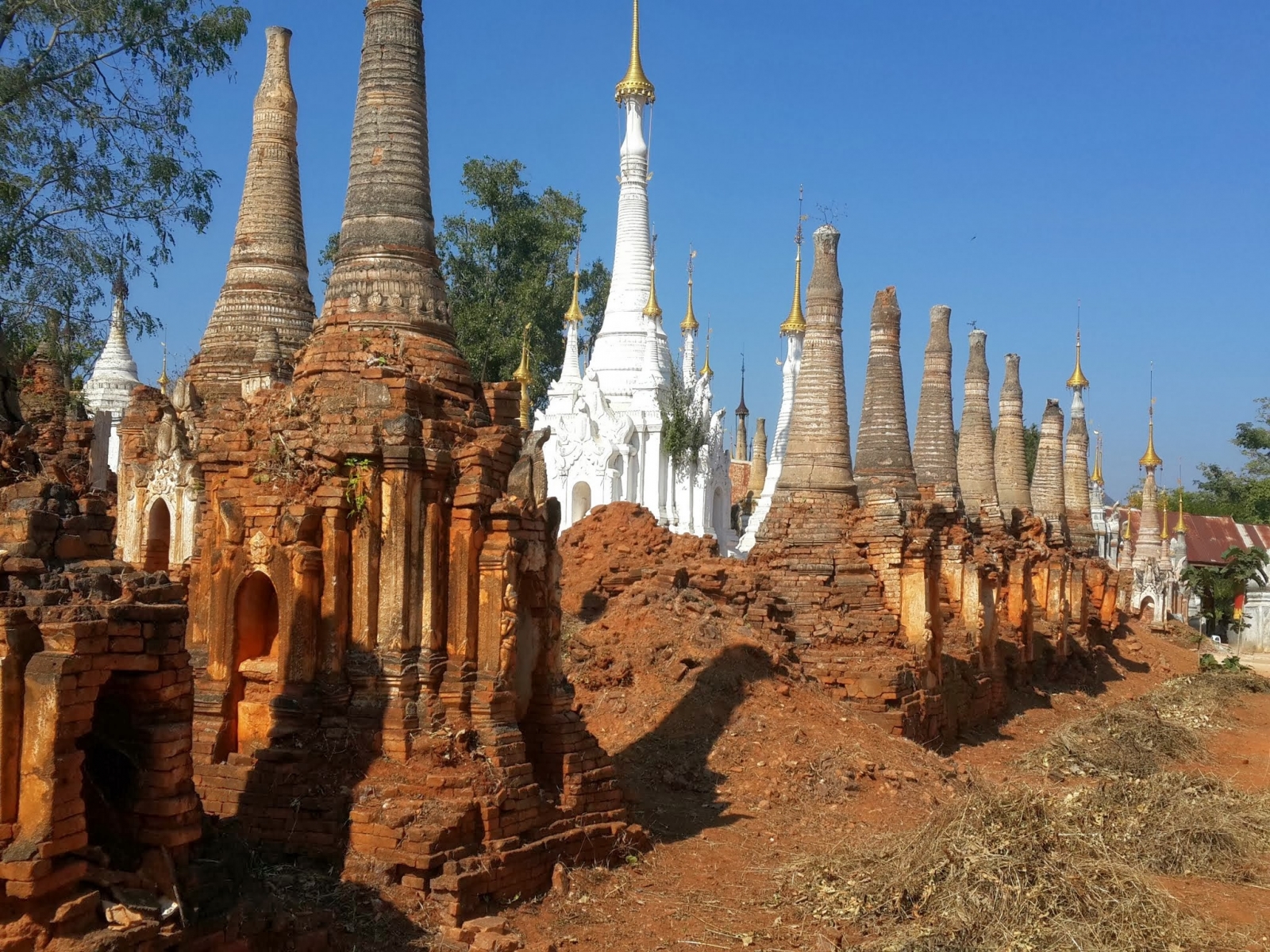
Shwe Indein Pagoda
Shwe Indein Pagoda, also known as Indein Pagoda, is a Buddhist temple located in the village of Indein, near the town of Nyaung Shwe in the Shan State of Myanmar. The pagoda complex consists of over 1,000 small stupas that are believed to have been built in the 17th and 18th centuries. One of the most striking features of the Shwe Indein Pagoda is the collection of ancient stupas that are covered in moss and vines, creating a unique and mystical atmosphere. Many of the stupas have been restored in recent years, with some even housing small Buddha images and altars.
Visitors to the pagoda can climb up a long covered stairway lined with souvenir shops to reach the main temple at the top, which offers panoramic views of the surrounding area. The pagoda complex is also home to several other structures, including a large Buddha image and a monastery. In addition to its historical and religious significance, the Shwe Indein Pagoda is also a popular destination for visitors to Inle Lake, who often combine a trip to the pagoda with a boat tour of the lake's floating villages and gardens.
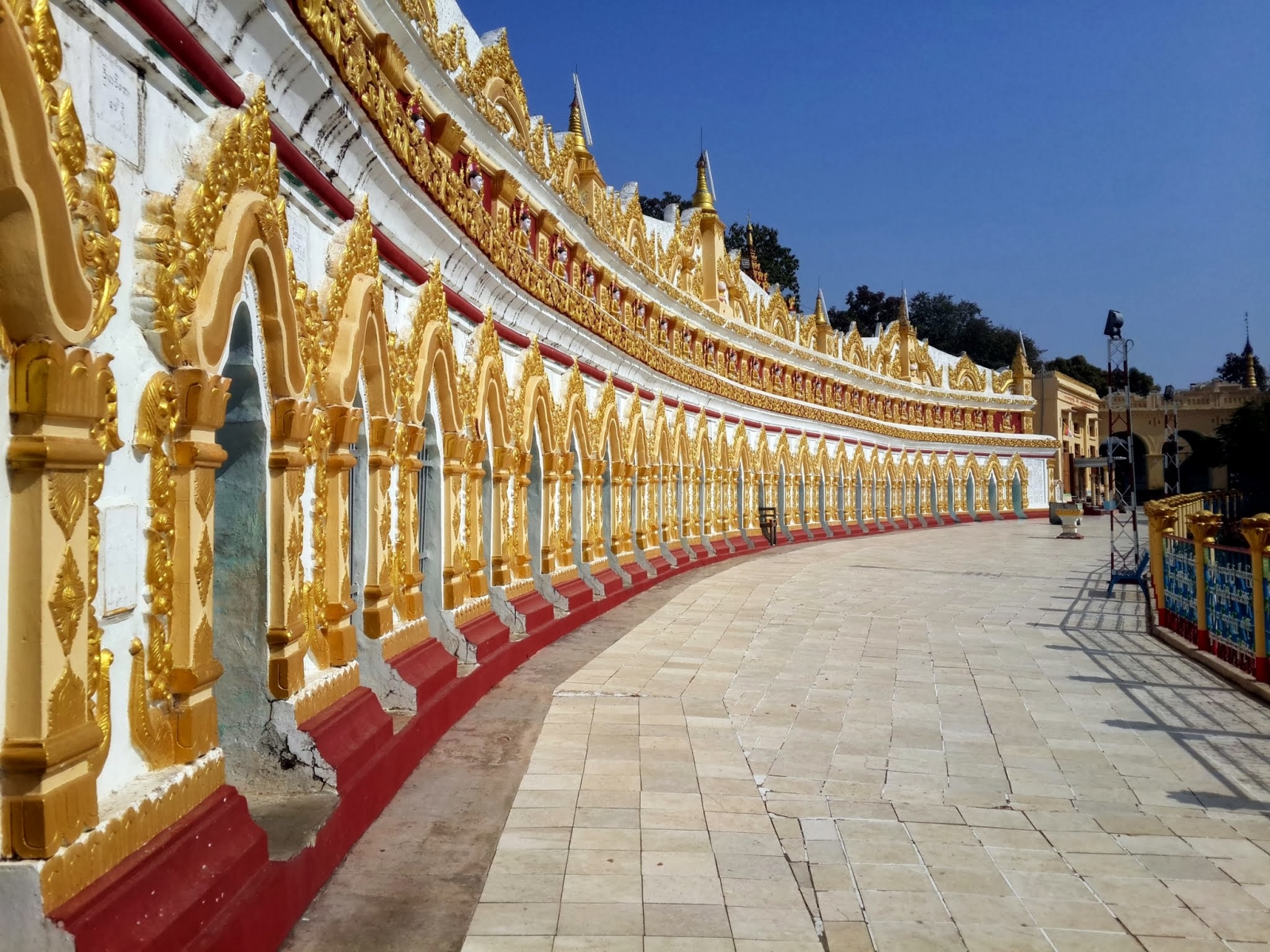
Umin Thonze Pagoda
Umin Thonze Pagoda, also known as the "Thirty Caves Pagoda," is a unique and picturesque Buddhist temple located in Sagaing, Myanmar. The pagoda features a series of 30 arched niches, each containing a Buddha statue in a different posture and mudra, or symbolic hand gesture. These niches are situated along a circular path around the main pagoda, which itself contains a large Buddha image. The name "Umin Thonze" means "Thirty Caves," and refers to the appearance of the arched niches which resemble small caves. The temple was built in the 14th century and was renovated and expanded over the centuries, with the current structure dating back to the 18th century.
Visitors can climb the stairs to the top of the main pagoda for a panoramic view of the surrounding area. There is also a small museum on the grounds of the temple which displays ancient Buddha images and other artifacts. The temple is particularly popular during the annual Sagaing Hill Pagoda Festival, which takes place in October or November each year.
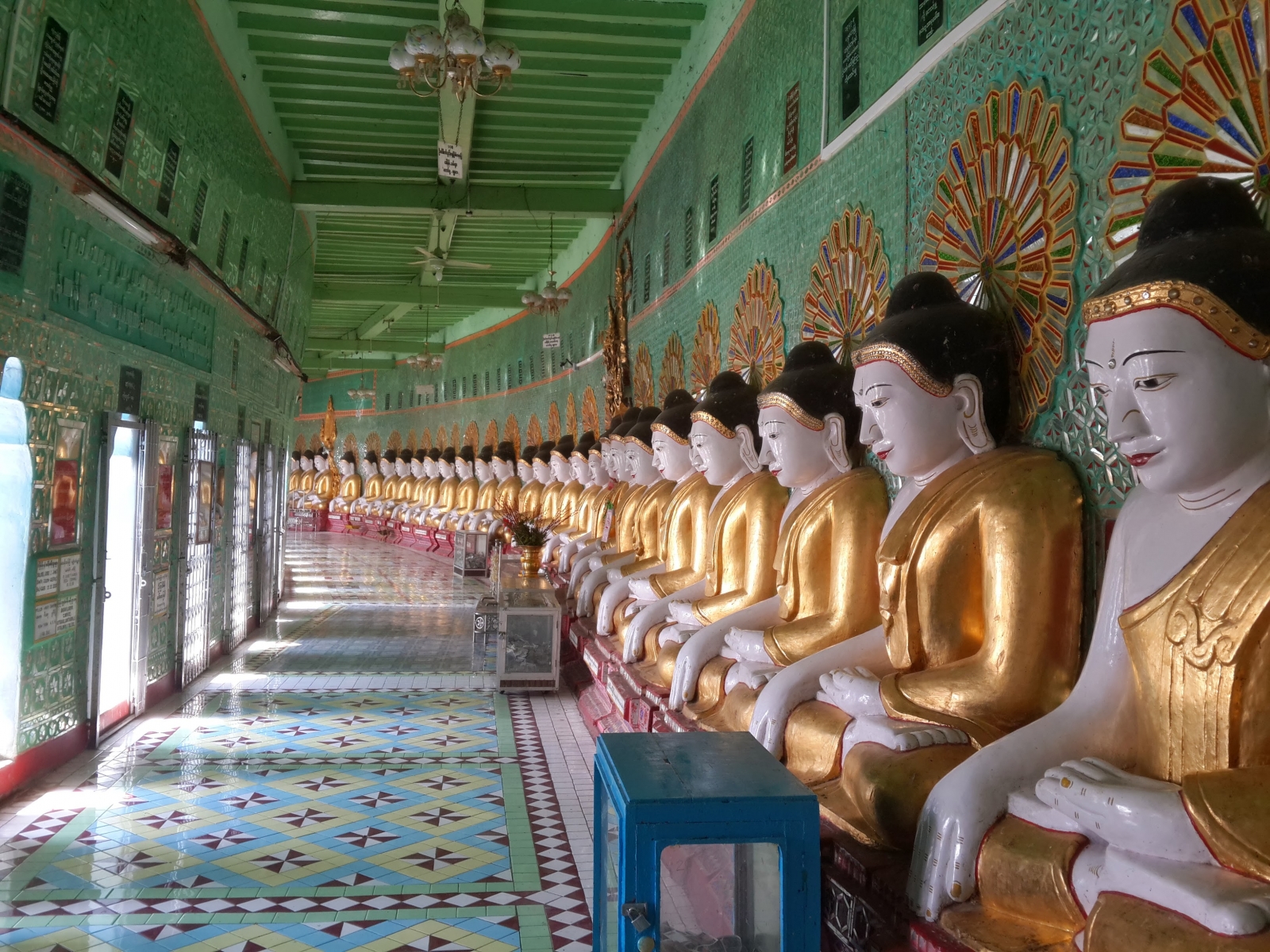
Pagoda in Sagaing Hill
The Pagoda in Sagaing Hill, also known as the Soon U Ponya Shin Pagoda, is a major religious site located in Sagaing, Myanmar. The hill itself is home to hundreds of monasteries and religious structures, but the Pagoda in Sagaing Hill stands out due to its unique architecture and grandeur. The pagoda was built in the 14th century by King Thado Minbya and underwent several renovations and restorations over the centuries. The pagoda features a distinctive bell-shaped stupa that stands over 46 meters tall, making it one of the tallest structures in the Sagaing region.
Visitors can climb the steep steps leading up to the pagoda to reach the main platform, where they can enjoy panoramic views of the surrounding countryside and the Irrawaddy River. The pagoda is also home to several smaller shrines, statues, and pavilions, making it a popular destination for both tourists and local pilgrims. The Pagoda in Sagaing Hill is considered to be one of the most important religious sites in Myanmar, and it continues to attract visitors from around the world who come to marvel at its stunning architecture and soak up the spiritual atmosphere of the hill.
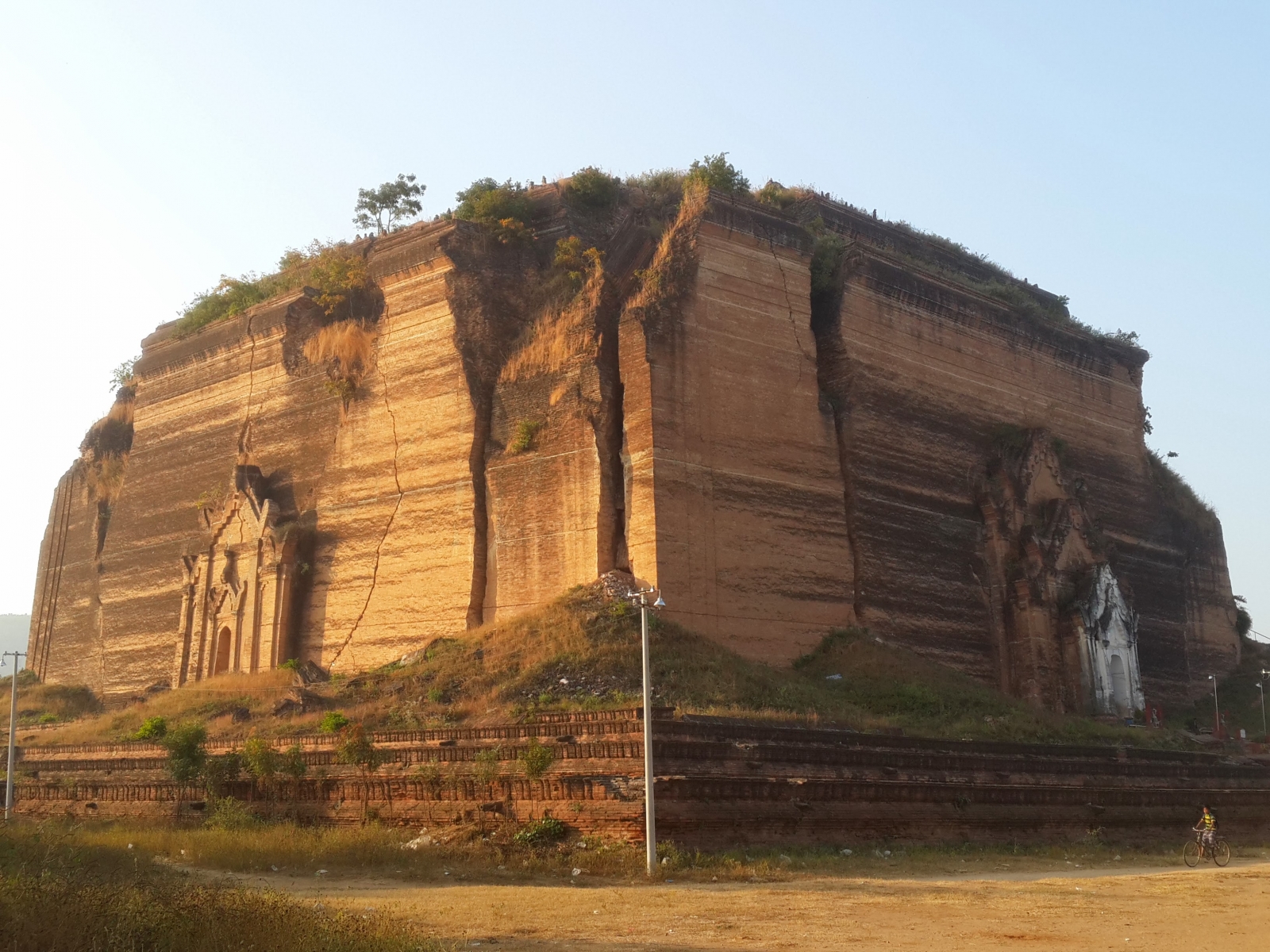
Mingun Pahtodawgyi stupa
Mingun Pahtodawgyi stupa is an unfinished stupa located in Mingun, a town near Mandalay in Burma. The construction of the stupa was initiated by King Bodawpaya in 1790, but it was never completed due to a prophecy that the country would be conquered if the temple was finished. The Mingun Pahtodawgyi was meant to be the largest stupa in the world, with a height of 150 meters. However, due to the king's death in 1819, the construction was halted, and the temple remains unfinished to this day.
Despite its unfinished state, the Mingun Pahtodawgyi is still a popular tourist attraction in Burma, and visitors can climb up the massive terraces to enjoy stunning views of the Irrawaddy River and the surrounding countryside. The massive brick structure is also home to several large cracks, caused by a series of earthquakes over the years. In 1839, an earthquake caused one of the massive cracks to form, and the temple has remained in disrepair ever since. Nevertheless, the Mingun Pahtodawgyi remains an impressive testament to the skills and ambitions of the Burmese people of the past.
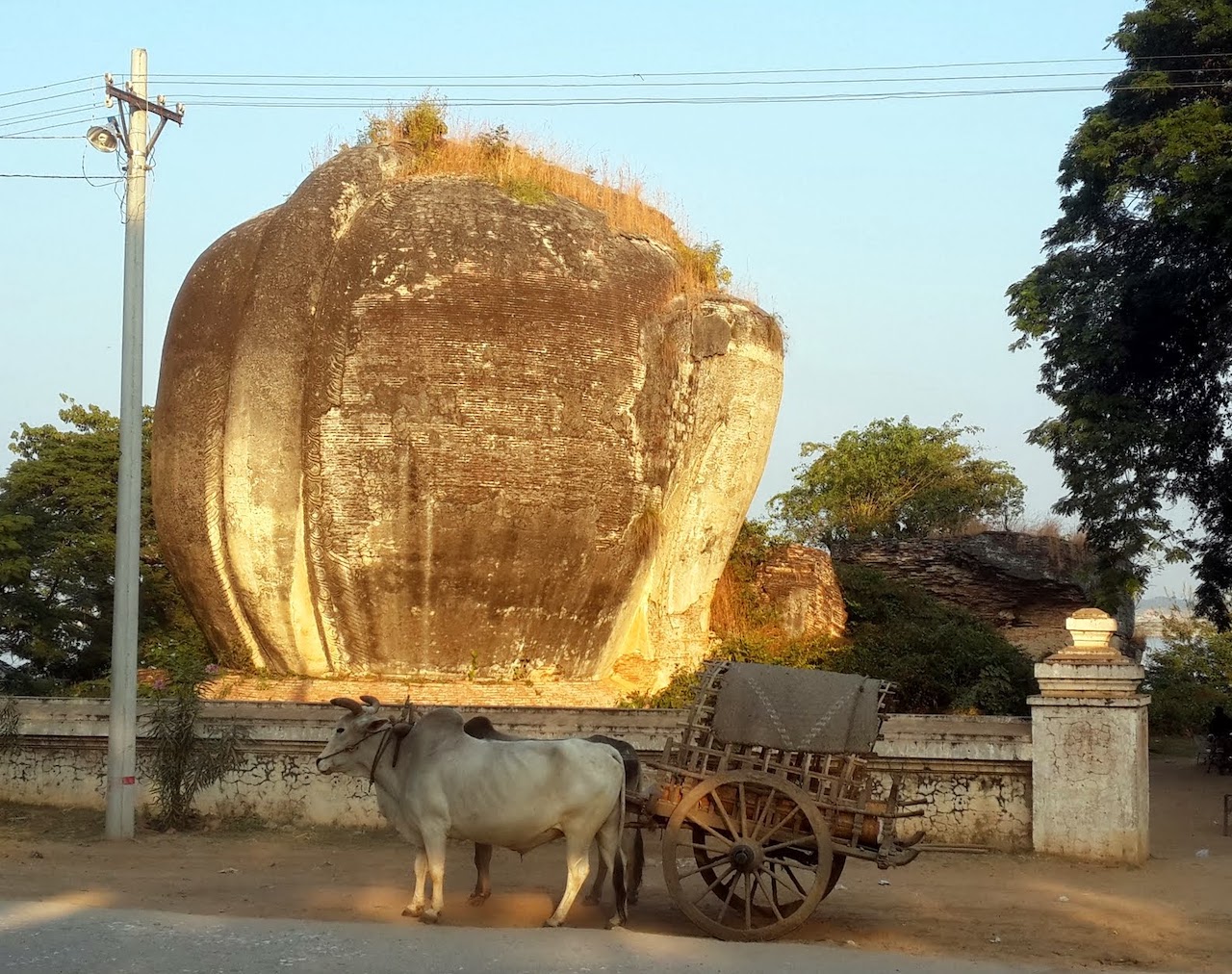
'Lions of Stone' or Lion Rock, Mingun near Mandalay
The Lions of Stone, also known as the Mingun Pahtodawgyi, is a large unfinished stupa located in Mingun, just north of Mandalay in Burma. The construction of the stupa was commissioned by King Bodawpaya in 1790, but due to various reasons, including an astrologer's warning that the king would die upon its completion, it was never finished. Despite being incomplete, the Mingun Pahtodawgyi is still an impressive sight, standing over 50 meters tall and 72 meters wide at the base. It is made of brick and is said to be the largest uncracked brick structure in the world.
One of the unique features of the stupa is the four massive lion sculptures, each over 4 meters tall, located at the base of the structure. The lions are carved out of stone and considered some of the finest examples of Burmese stone carving. Today, visitors can climb up the massive stairway to the top of the structure to enjoy panoramic views of the surrounding area. Although it was never completed, the Mingun Pahtodawgyi remains a fascinating and impressive example of Burmese architecture and craftsmanship.
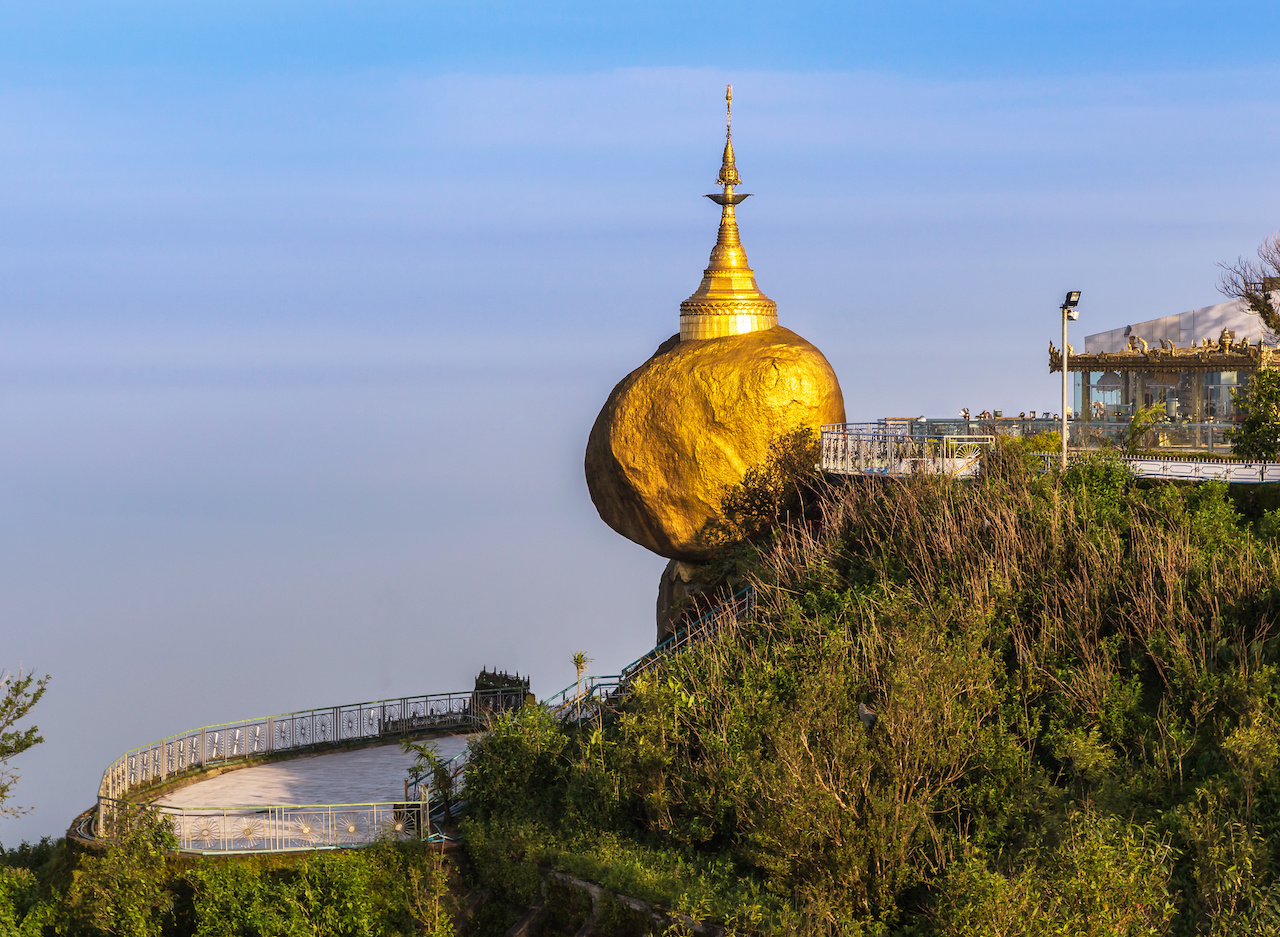
Kyaikhtiyo Pagoda or Golden Rock - the most important Buddhist pilgrimage site located in the Mon state of Burma. We told about this beautiful site in the first part of our travel story to Myanmar, you can find it here - From Shwedagon Pagoda to Inle Lake: Discovering the Charms of Burma (part I)
Hsin Yume Pagoda (Myatheindan Pagoda)
Hsinbyume Pagoda, also known as Myatheindan Pagoda, is a stunning all-white pagoda located in Mingun, near Mandalay in Burma. The pagoda was built in 1816 by Prince Bagyidaw, who later became the King of Burma. It is a popular tourist destination due to its unique design and striking appearance. The Hsinbyume Pagoda is made up of seven terraces, which represent the seven mountain ranges that surround Mount Meru in Buddhist mythology. The pagoda is all-white and has a distinctive design with curves and arches that create a sense of depth and perspective. The top of the pagoda is adorned with a golden umbrella, which is a symbol of the Burmese monarchy.
In addition to its stunning appearance, the Hsinbyume Pagoda is also significant for its religious and cultural importance. The pagoda is dedicated to the memory of Princess Hsinbyume, who was the first wife of Prince Bagyidaw. The princess died in childbirth and the pagoda was built in her honor. The pagoda is also considered to be a symbol of the union between the king and the queen and of the strength of the Burmese monarchy.
Visitors to the Hsinbyume Pagoda can enjoy stunning views of the surrounding countryside and the Irrawaddy River. The pagoda is located near other popular tourist attractions, including the Mingun Pahtodawgyi stupa and the Lions of Stone. It is a must-see destination for anyone visiting Mandalay and the surrounding areas. It is always nice to visit all those historical sites accompanied by a local individual tour guide in Burma, who speaks a foreign language and knows the history and traditions of the country.
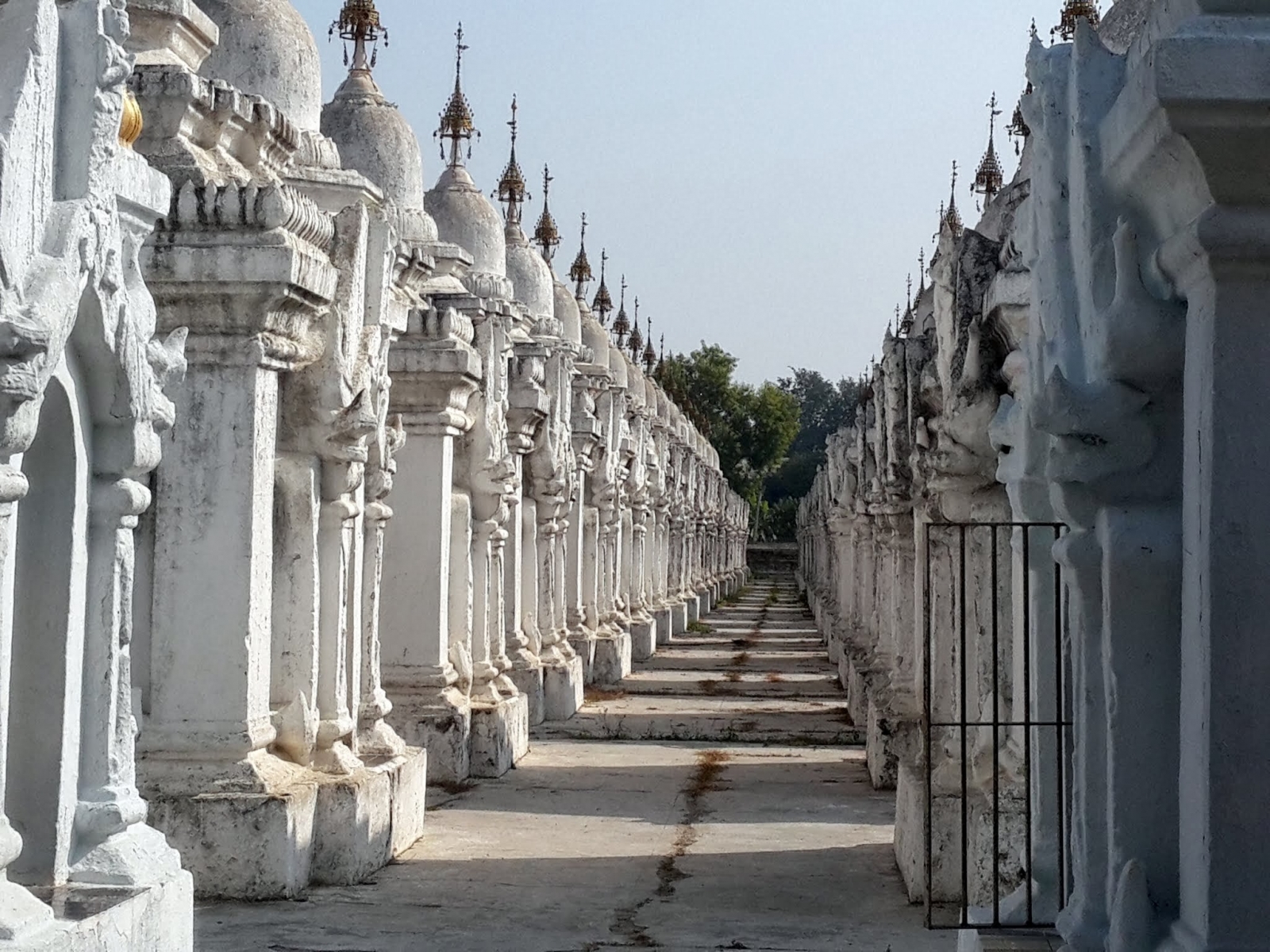
Kuthodaw Pagoda
Kuthodaw Pagoda, also known as the "Maha Lawka Marazein Pagoda", is a Buddhist stupa located in Mandalay, Myanmar. It was built during the reign of King Mindon Min in 1857, and its main feature is a large central stupa surrounded by 729 small pagodas, each containing a marble slab inscribed with Buddhist scriptures. The pagoda is often referred to as "the world's largest book" due to the inscriptions on the marble slabs, which contain the entire Tipitaka, or the Buddhist canon. The marble slabs are arranged in rows under the small pagodas, and visitors can walk around the complex and read the inscriptions.
The central stupa is decorated with ornate carvings and colorful tiles, and there are several other smaller stupas and shrines on the grounds. The pagoda is surrounded by a large complex of monasteries, meditation halls, and other buildings, and it is a popular destination for Buddhist pilgrims and tourists alike. Visitors to Kuthodaw Pagoda can also enjoy the peaceful and serene surroundings, with lush green gardens, shady trees, and tranquil ponds providing a welcome respite from the hustle and bustle of city life.
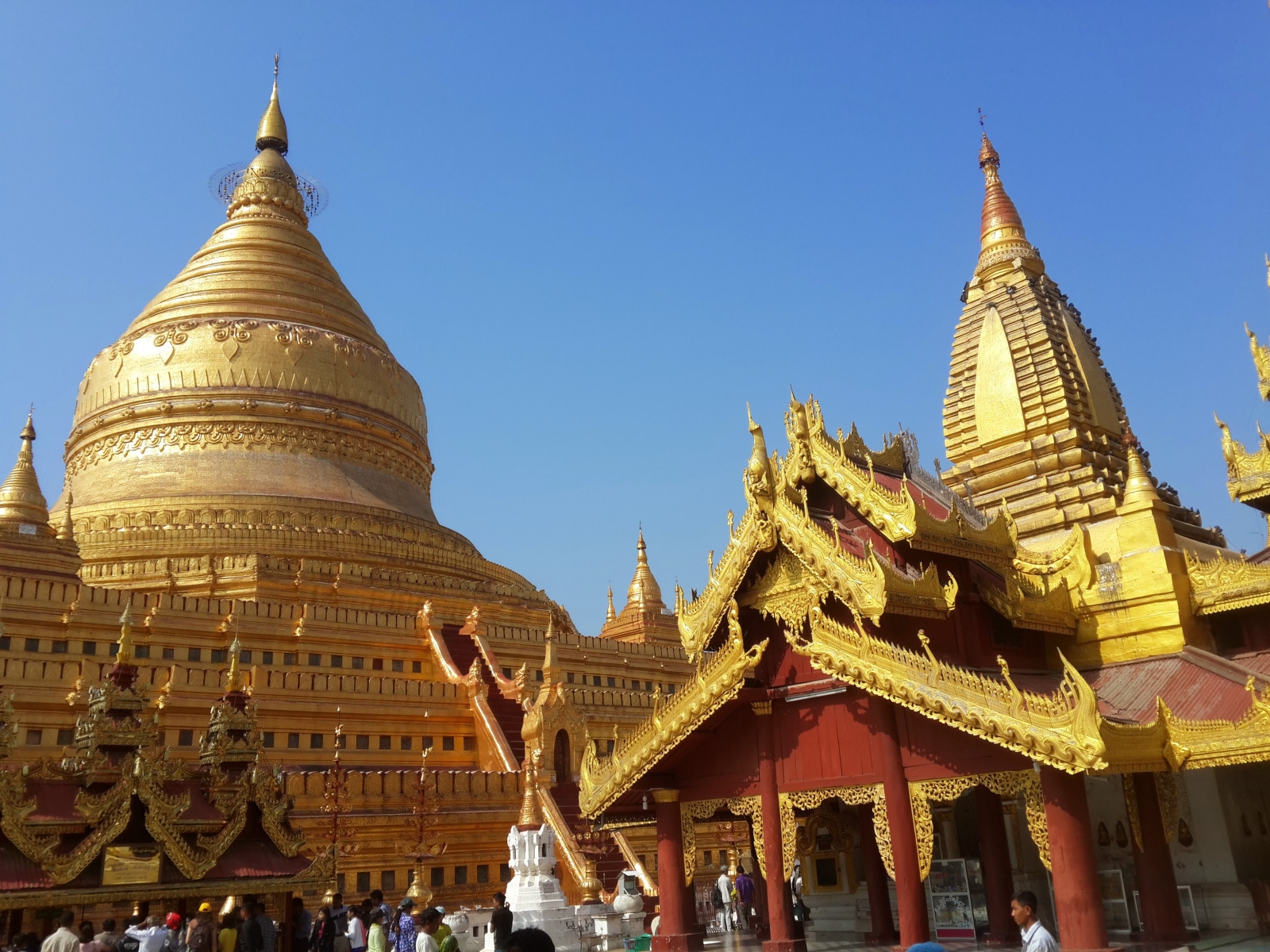
Shwezigon Pagoda is a Buddhist temple located in the ancient city of Bagan, Myanmar. The temple was built during the reign of King Anawrahta in the 11th century, and it is believed to contain some of the earliest Buddhist relics in Myanmar. The temple has been restored and renovated many times over the centuries, and it remains an important pilgrimage site for Buddhists in Myanmar. The Shwezigon Pagoda has a distinctive design, with a large golden stupa surrounded by smaller stupas, temples, and other structures. The golden stupa is 47 meters tall and is covered in gold leaf. The temple is decorated with intricate carvings, colorful frescoes, and other works of art.
According to legend, the Shwezigon Pagoda was built to enshrine a sacred tooth relic of the Buddha that was brought to Bagan from Sri Lanka. The temple has undergone several renovations and additions throughout its history, and it is considered to be one of the most significant religious structures in Myanmar. The temple is especially famous for its bronze bell, which is said to be the largest bell in Myanmar and one of the largest in the world.
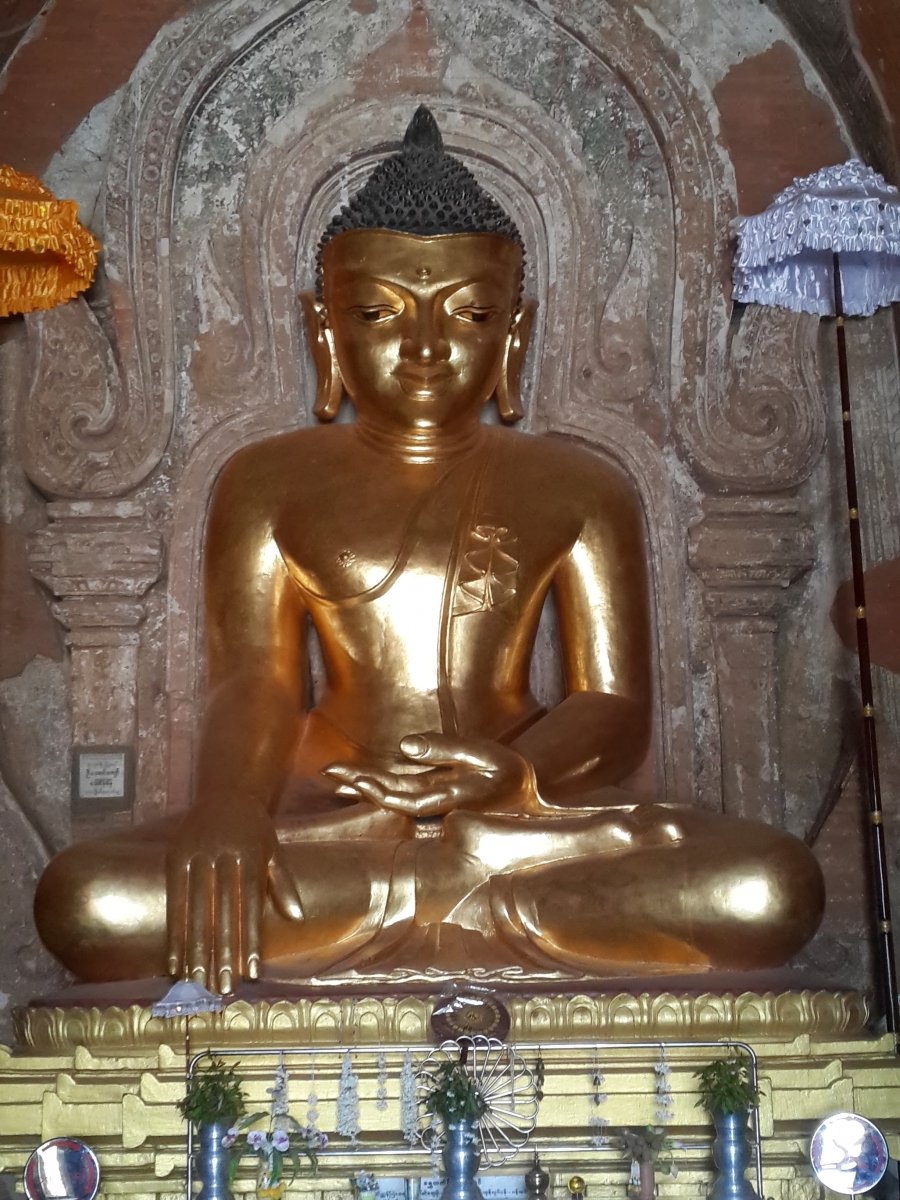
Htilominlo Pahto
Htilominlo Pahto is a Buddhist temple located in the ancient city of Bagan, Myanmar. The temple was built during the reign of King Htilominlo, who ruled Bagan from 1211 to 1235 CE. The temple is known for its impressive architecture and ornate carvings, which depict scenes from Buddhist mythology. The temple stands three stories tall and features an impressive 46-meter-tall pyramid-shaped spire. The spire is decorated with intricate carvings and is topped with a gold finial. The temple's facade is adorned with glazed plaques that depict scenes from the Jataka tales, which are stories about the Buddha's past lives.
Visitors can find a large seated Buddha statue made of lacquered and gilded with gold leaf inside the temple. The temple also features several smaller Buddha statues and intricate murals that depict Buddhist stories. Htilominlo Pahto is considered one of the best-preserved temples in Bagan, and it is a popular destination for tourists who come to marvel at its intricate architecture and learn about Myanmar's rich cultural heritage.
Ananda Temple
Ananda Temple is one of the most significant and well-preserved temples in Bagan, Myanmar. It was built in the 12th century during the reign of King Kyanzittha, and it is believed to have been constructed to honor the king's favorite teacher, Ananda. The temple is considered a masterpiece of Mon architecture and is characterized by its symmetrical layout, elegant spires, and four standing Buddha images facing the cardinal directions.
One interesting fact about the Ananda Temple is that it is said to contain relics of the Buddha, which were brought from Sri Lanka. Another notable feature of the temple is the beautiful frescoes on the walls, depicting scenes from the life of the Buddha and Jataka tales. Visitors can also see the intricate carvings on the exterior of the temple, including ornate floral and geometric designs.
The temple is an important site for Buddhist pilgrims and visitors alike, and it is known for its annual Ananda Pagoda Festival, which takes place in January and attracts thousands of visitors from all over Myanmar. During the festival, the temple is illuminated with thousands of candles, and people gather to pay their respects, make offerings, and enjoy traditional music and dance performances.
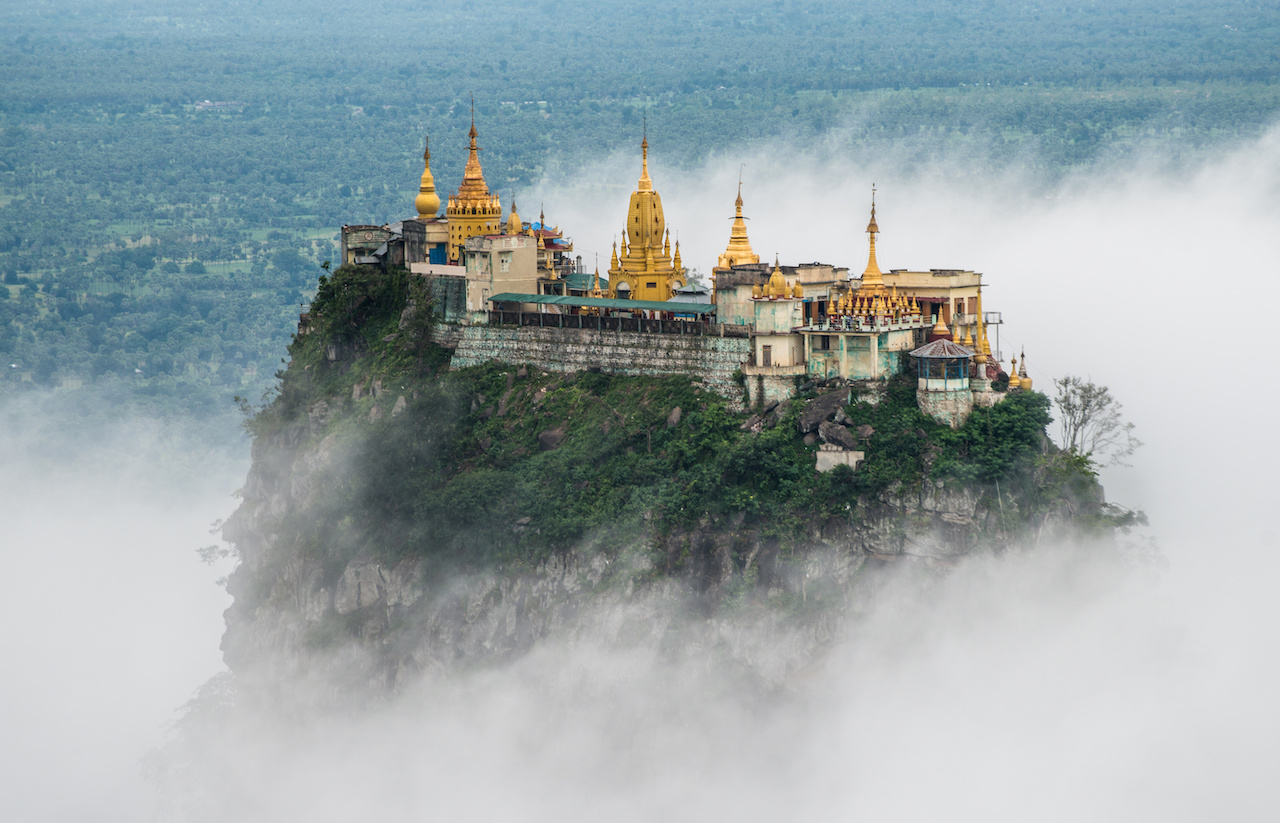
Mount Popa
Mount Popa is a volcano situated in central Myanmar, around 50 km southeast of the city of Bagan. The mountain rises 1,518 meters above sea level and is known for its religious significance as a popular pilgrimage site for Buddhists and the home of the nats, the traditional Burmese spirits. At the base of the mountain, there is a small village called Popa Taung Kalat, which is built on a rocky outcrop and has a monastery and temple complex that attracts many visitors. Visitors can climb the 777 steps to the top of the outcrop to reach the temple and enjoy the panoramic views of the surrounding area.
The area surrounding Mount Popa is also known for its natural beauty, with forests, rivers, and wildlife. It is a popular destination for hiking and nature enthusiasts. The region is also famous for producing toddy palm wine, a sweet and slightly alcoholic beverage made from the sap of the toddy palm tree.
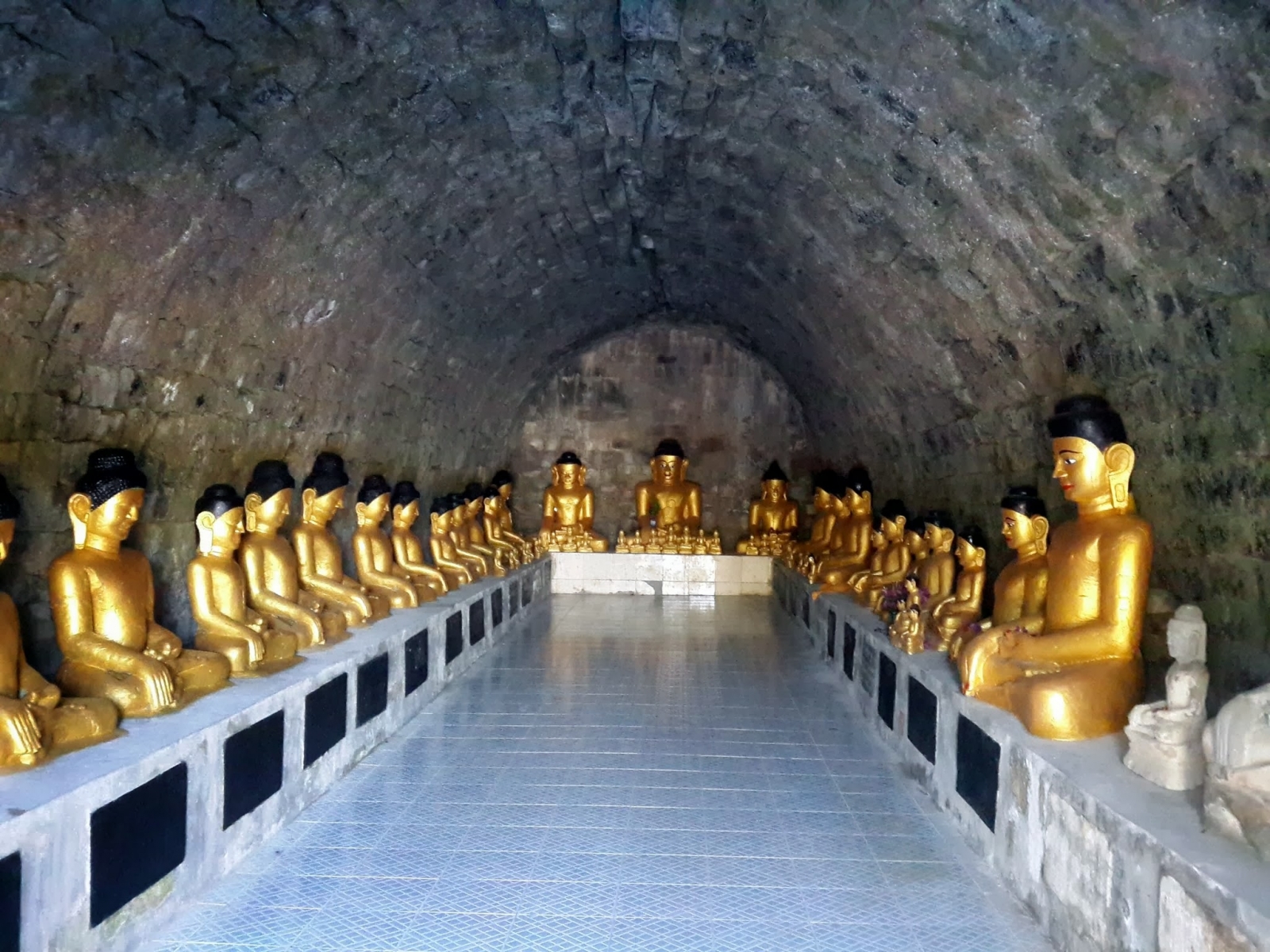
MRAUK U
Mrauk U is an ancient city located in the Rakhine State of western Myanmar (Burma). It was the capital of the Rakhine Kingdom from the 15th to the 18th century and is known for its well-preserved temples and pagodas.
Some interesting facts about Mrauk U include:
- Mrauk U was an important trading port between the 15th and 18th centuries and played a key role in the regional trade network, particularly in the trade of spices, ivory, and slaves.
- The city is home to over 100 ancient temples and pagodas, many of which were built during the reign of King Minbin in the 16th century.
- Some of the most notable temples in Mrauk U include the Shitthaung Temple, which features over 80,000 Buddha images, and the Koe Thaung Temple, which has 90,000 Buddha images.
- Mrauk U was largely unknown to the outside world until the mid-19th century when British explorers rediscovered the city and its ancient temples.
- The city was heavily damaged during World War II and much of its architectural heritage was lost. In recent years, there have been efforts to restore and preserve the remaining temples and buildings in Mrauk U.
- Mrauk U is also known for its unique traditional architecture, including the use of stone and brick in construction and the ornate carvings and decorations on the temples and pagodas.
- The city is home to a diverse mix of ethnic groups, including the Rakhine, Chin, and Rohingya peoples, and has been the site of ethnic and religious conflict in recent years.
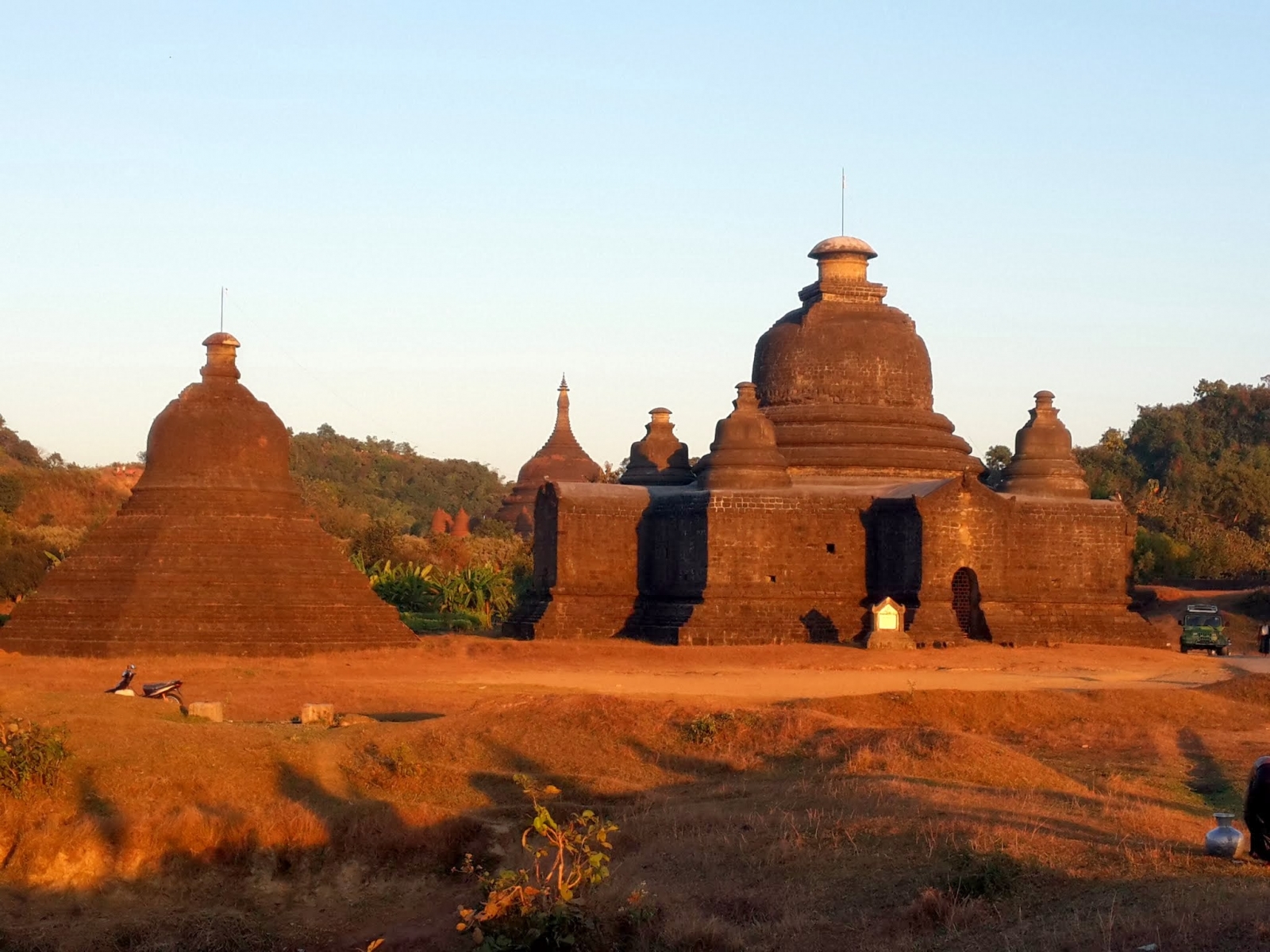
Lay Myet Hna Temple
Lay Myet Hna Temple is a historic temple located in Mrauk U, a city in the Rakhine State of Myanmar. It is one of the most significant temples in the city and is known for its impressive architecture and intricate carvings. The temple was built in the 15th century during the reign of King Min Saw Mon, who was the founder of the Mrauk U Kingdom. The temple was initially built as a Hindu temple but was later converted to a Buddhist temple during the reign of King Dikkha in the 16th century.
The temple features intricate carvings and statues of Hindu gods and goddesses, as well as Buddha and his disciples. The most prominent feature of the temple is its 46-meter-high spire, which is decorated with ornate carvings and sculptures. The temple has undergone several renovations and restorations over the years, but it remains an important cultural and religious site in Myanmar. Visitors to Lay Myet Hna Temple can marvel at its impressive architecture and explore its fascinating history.
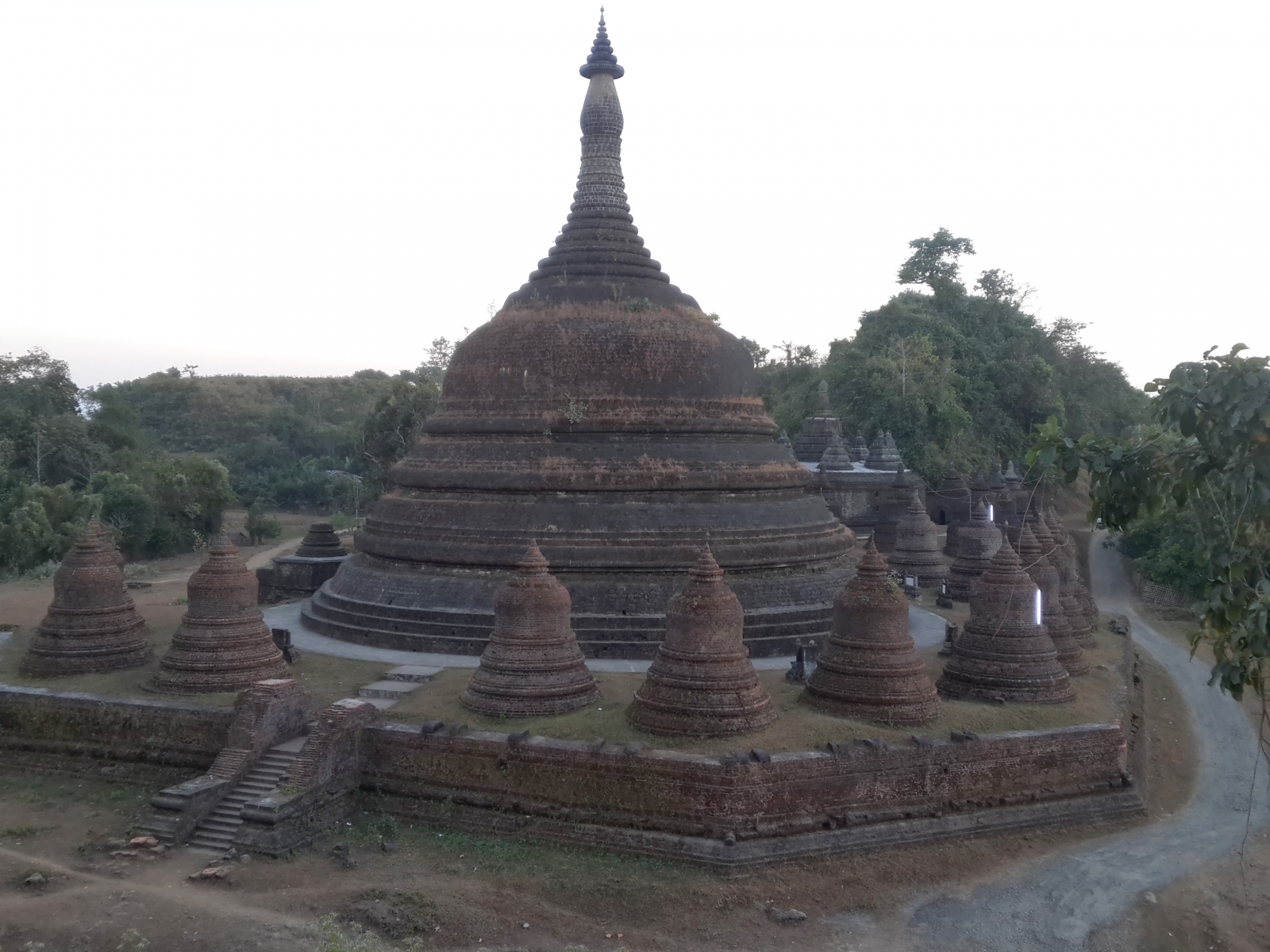
Ratanabon Pagoda
Ratanabon Pagoda is a historic Buddhist temple located in Mrauk U, a city in the Rakhine State of western Myanmar. The temple is known for its impressive architecture and intricate stone carvings. The Ratanabon Pagoda was built by King Min Saw Mon in the 15th century, during the heyday of the Arakanese kingdom. It is a seven-tiered pagoda, with each tier adorned with ornate stone carvings depicting various Buddhist motifs and mythological creatures. The temple also houses a number of ancient artifacts and relics, including a set of bronze bells that were believed to have been cast in the 16th century.
The Ratanabon Pagoda is considered one of the most important religious sites in Mrauk U and attracts many visitors every year. The temple is also known for its stunning views of the surrounding countryside, making it a popular spot for photographers and tourists alike.
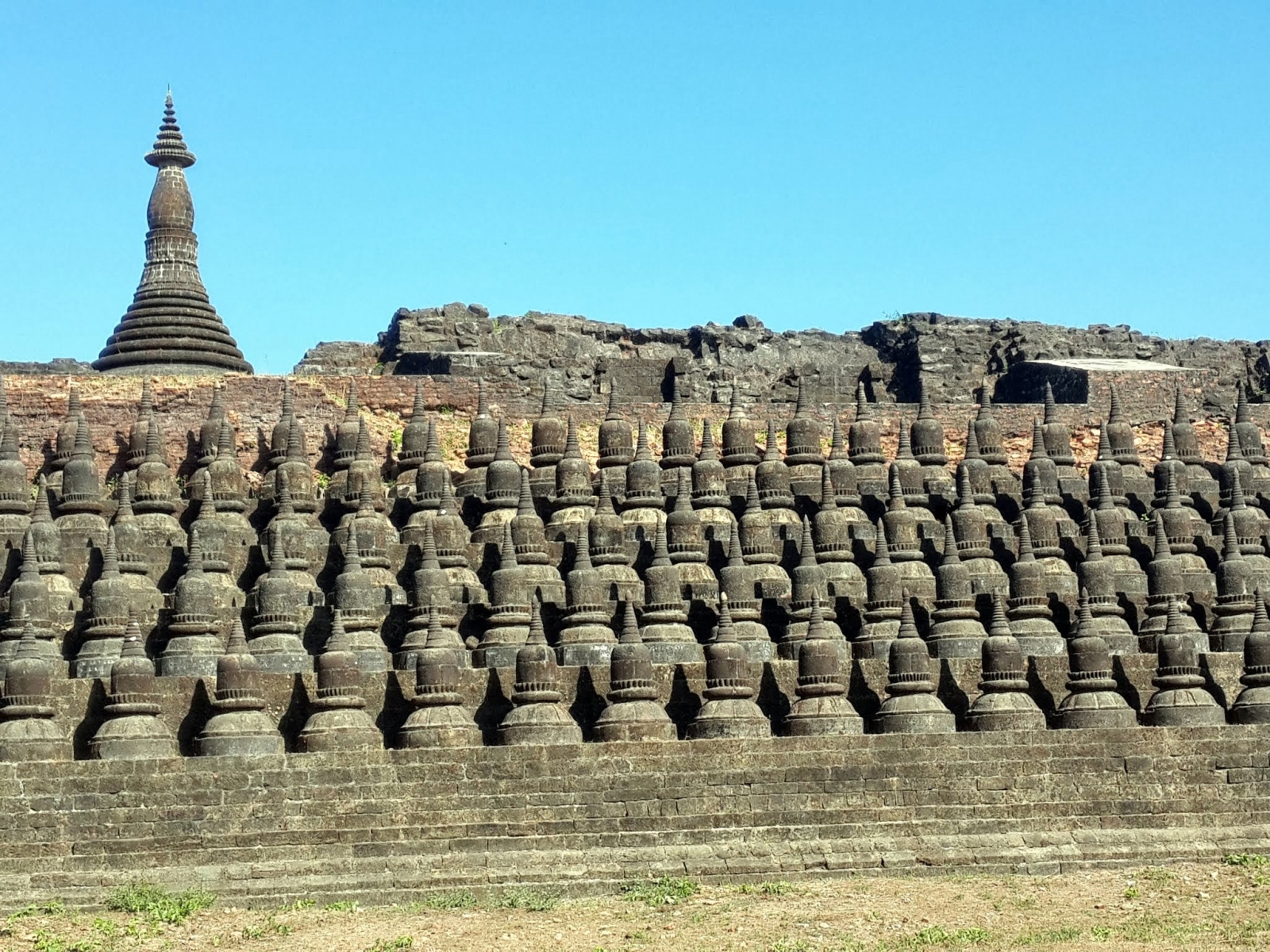
Koe Thaung Pagoda
Koe Thaung Pagoda is a historical Buddhist temple located in the Mrauk U Archaeological Area in Rakhine State, Myanmar. The temple was built in the 16th century by King Dikkha, who ruled the Arakan kingdom from 1554 to 1571. Koe Thaung Pagoda is famous for its many stupas, which are said to number over 90,000, making it one of the largest temples in Myanmar. The name "Koe Thaung" means "Temple of 90,000 Buddha Images" in Burmese.
The temple is built in a square shape, with each side measuring about 100 meters. The main stupa, which is located in the center of the temple, is over 40 meters tall. Inside the temple, there are many smaller stupas, Buddha images, and intricate carvings on the walls and ceilings. Koe Thaung Pagoda is an important pilgrimage site for Buddhists in Myanmar and is a popular tourist attraction, especially for those interested in history and architecture.
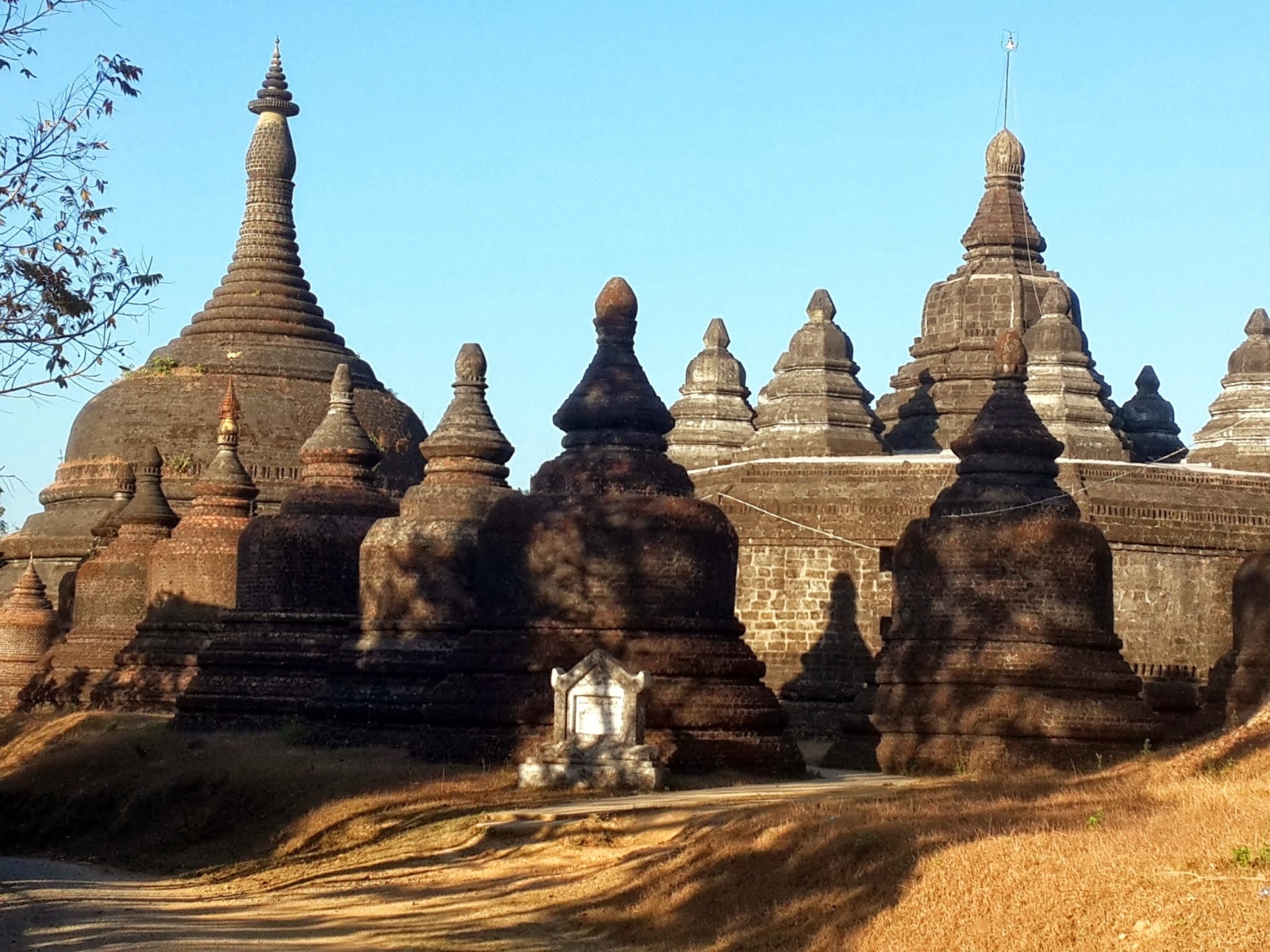
Andaw Thein Temple
Andaw Thein Temple is a historic temple located in the city of Mrauk U in Rakhine State, Myanmar. It is a popular tourist attraction known for its unique architecture and historical significance. The temple was built by King Min Saw Mon in the early 16th century and is believed to house a tooth relic of the Buddha. The temple is constructed in a mixture of traditional Rakhine and Indian architectural styles and features intricate carvings and sculptures. The interior of the temple is dimly lit and contains a small shrine where the relic is enshrined. Visitors to the temple are required to remove their shoes before entering as a sign of respect.
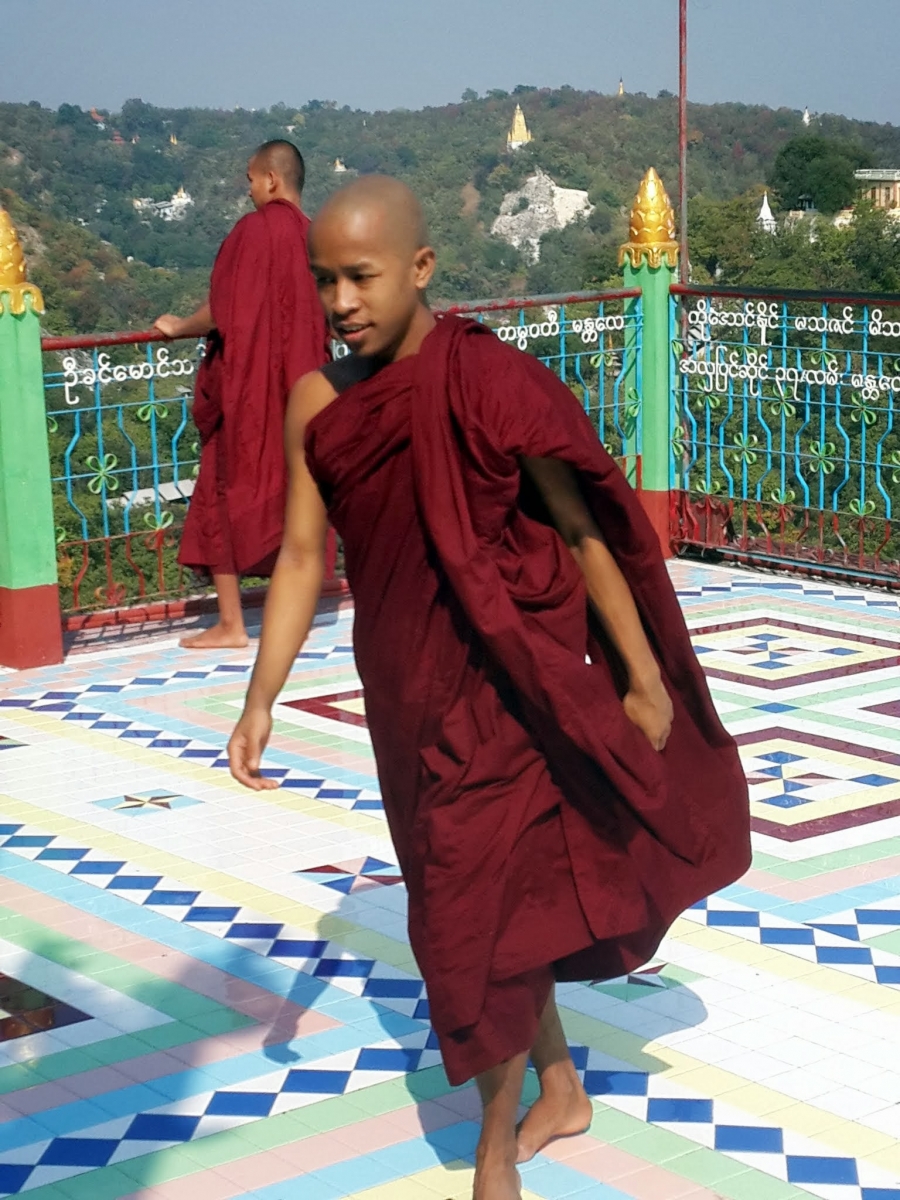
Buddhist Monks in Burma
Buddhist monks play a central role in Burmese society and culture. Monks are highly respected and regarded as spiritual leaders and teachers, and they are often consulted for guidance and advice on a wide range of issues. In Burma, becoming a monk is seen as a way to gain merit and achieve enlightenment. Many boys become novice monks, or cameras, for a short period of time as a rite of passage, while others choose to become fully ordained monks and devote their lives to the study and practice of Buddhism. Monks in Burma follow a strict set of rules known as the Vinaya, which governs their behavior and regulates their daily routines. They live a simple and ascetic lifestyle, relying on alms from laypeople for their daily sustenance.
One of the most visible aspects of monk life in Burma is the daily alms round, or pindapata, where monks walk through the streets collecting food and other offerings from laypeople. This is seen as an opportunity for laypeople to make merit and show respect to the monks. Monks also play an important role in traditional Burmese ceremonies and rituals, including weddings, funerals, and other religious festivals. They are often asked to give blessings and perform religious rites during these events. Overall, Buddhist monks are highly revered in Burmese society and are an integral part of the country's cultural and religious heritage.
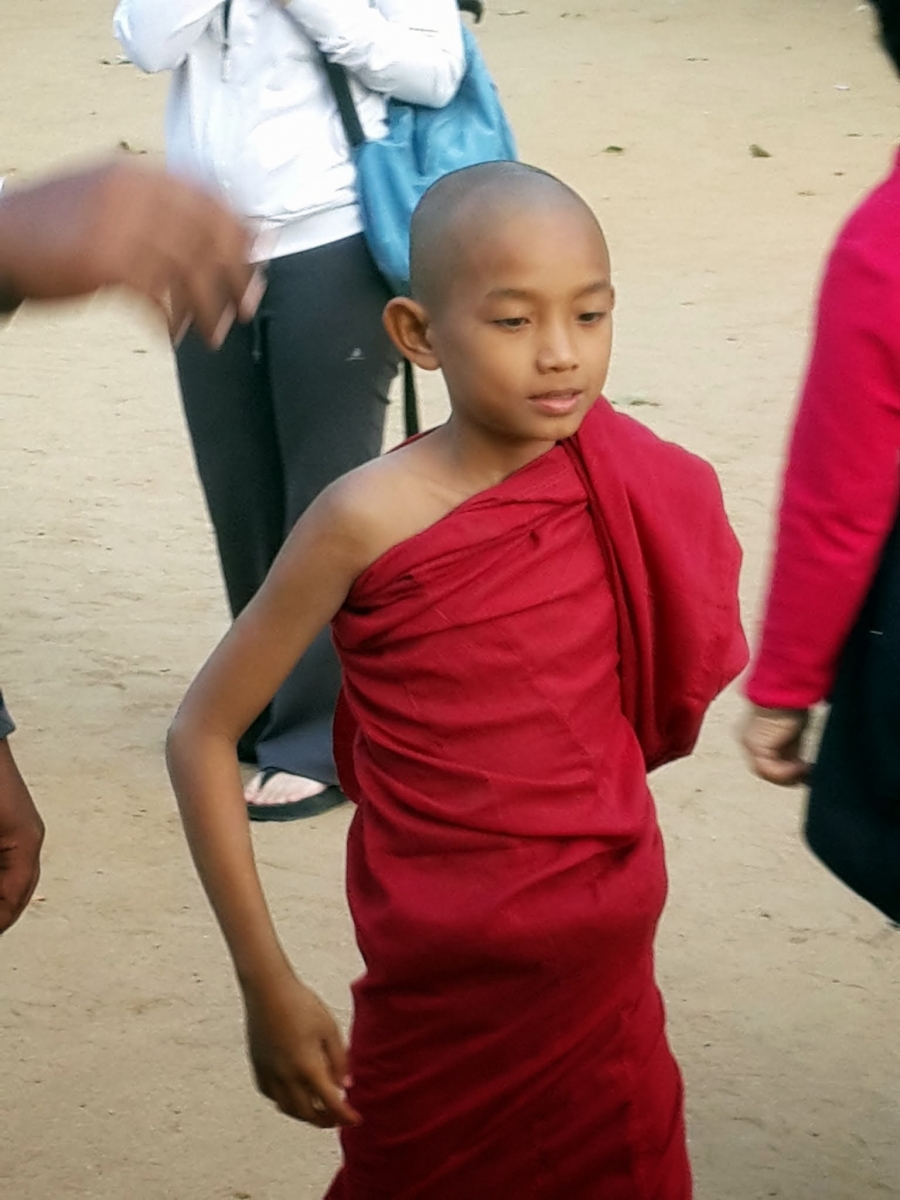
In Burma, becoming a monk is seen as a way of fulfilling one's spiritual obligations and gaining merit for oneself and one's family. Children are often sent to the monastery to become novices as a way of showing gratitude to their parents and ancestors and gaining merit for them. In addition, becoming a monk is viewed as a way of gaining knowledge and education, as monasteries often provide schooling and training in various subjects, including Buddhism, history, literature, and science. Many families see it as a way of providing their children with a better education and opportunities for the future.
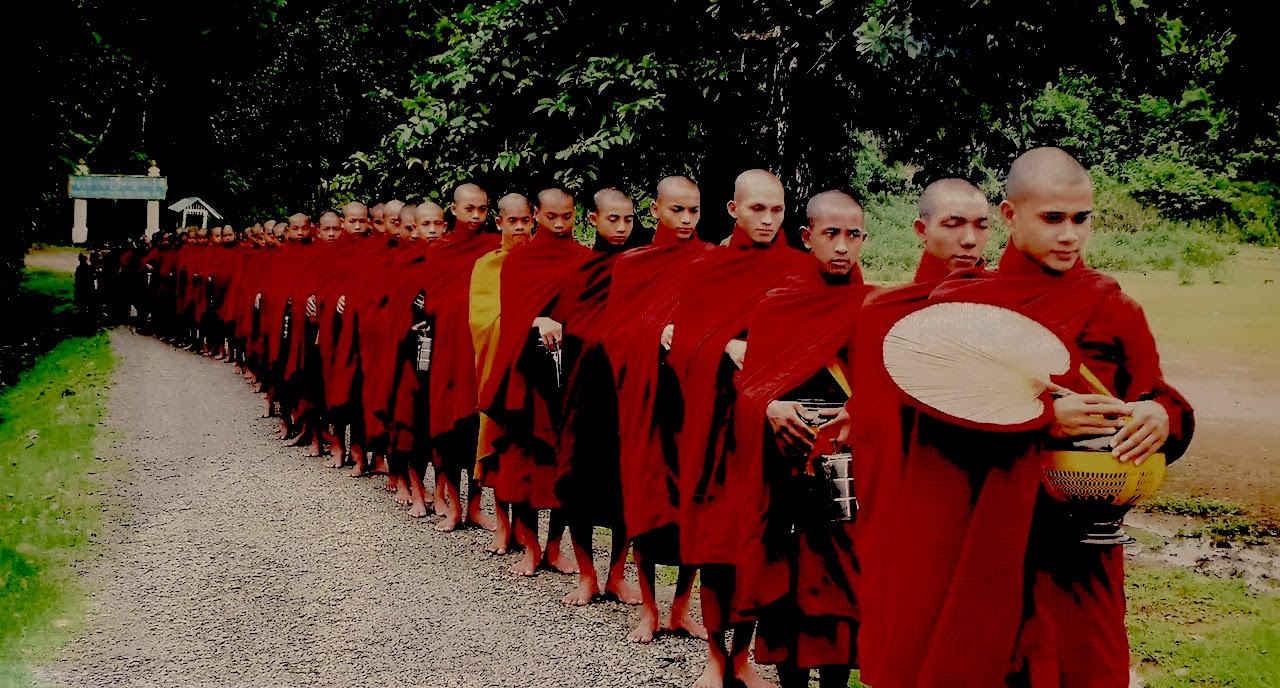
Furthermore, being a monk is also seen as a way of escaping from worldly distractions and temptations, and focusing on the pursuit of spiritual enlightenment and inner peace. It is viewed as a way of leading a simple and humble life and serving the community by providing spiritual guidance, counseling, and support. If you find a local personal tour guide in Burma you can ask him to introduce you to the Buddhist monks’ life.
In the Buddhist tradition, monks are not allowed to possess money or personal property. Therefore, they rely on alms to sustain themselves. The practice of walking around with a bowl to receive alms is called "pindapata" or "alms round". Monks walk barefoot through their local community early in the morning and receive food offerings from laypeople who place food into their bowls. This practice is not only a means of survival for the monks, but also a way to cultivate humility, gratitude, and interdependence between the monastic and lay communities. Additionally, laypeople who offer food to monks earn merit in Buddhist belief, which is believed to bring positive karmic consequences in this life or future lives.
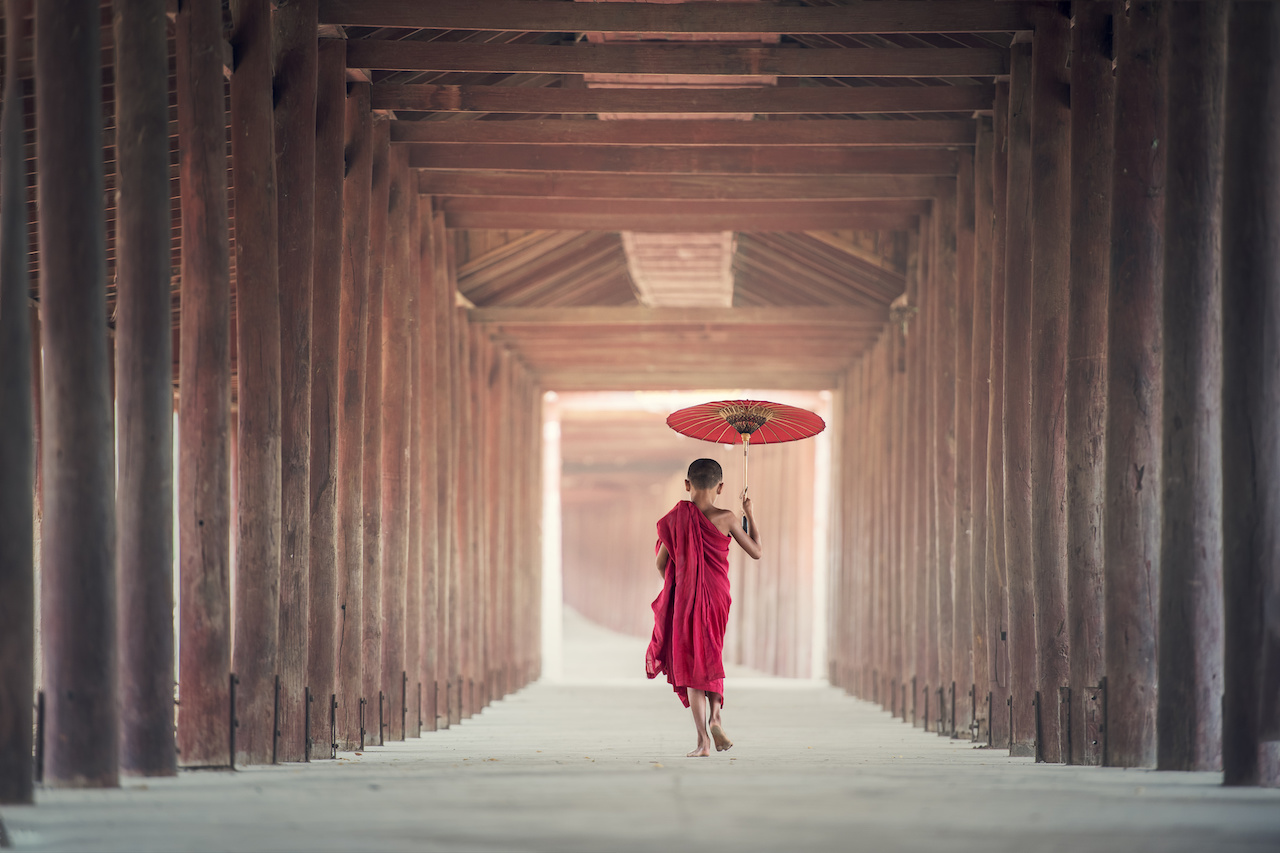
Significance of Burmese culture
Burmese culture is a unique blend of different cultural influences, including Indian, Chinese, and Southeast Asian. It is known for its rich traditions, festivals, and customs that have been passed down through generations. Here are some significant features of Burmese culture:
- Buddhism: Buddhism plays a vital role in Burmese culture, and over 80% of the population follows the Theravada tradition. The monks hold a revered place in society, and many Burmese men become monks at some point in their lives.
- Language: The official language of Burma is Burmese, which is spoken by the majority of the population. However, there are over 100 different ethnic groups in the country, each with its own language and dialect.
- Food: Burmese cuisine is diverse and delicious, with influences from India, China, and Thailand. Some popular dishes include Mohinga (a fish soup with rice noodles), tea leaf salad, and Shan noodles.
- Festivals: Burma is famous for its festivals, which are often colorful and vibrant affairs. The most popular festival is Thingyan, also known as the Water Festival, which celebrates the Burmese New Year.
- Clothing: Traditional Burmese clothing is colorful and distinctive, with men wearing a longyi (a type of sarong) and women wearing a htamein (a skirt).
- Art and Architecture: Burmese art and architecture are highly influenced by Buddhism and feature intricate designs, carvings, and sculptures. The pagodas and temples of Burma are famous worldwide for their beauty and grandeur.
- Hospitality: Burmese people are known for their hospitality and friendliness towards foreigners. Guests are treated with great respect, and it is common for Burmese families to offer food and drink to visitors.

Precious Stones in Burma
Burma is known for being one of the world's top producers of precious stones, including rubies, sapphires, jade, and pearls. The country's rich geology and mineral deposits, combined with its long history of skilled gemstone extraction and craftsmanship, have made it a center for the global gemstone trade. The Mogok region in central Burma is particularly famous for producing high-quality rubies and sapphires. Burmese rubies, in particular, are highly sought after for their deep red color and are considered among the finest in the world.

Jade is another important gemstone found in Burma, with the most significant deposits located in the northern Kachin state. Burmese jade is highly valued for its unique green color, transparency, and texture. The country's gemstone industry has been plagued by controversy and allegations of human rights abuses, with many of the mines controlled by military-owned or affiliated companies. In recent years, there have been efforts to reform the industry and improve working conditions for miners and cutters.
Overall, the gemstone industry remains a significant part of Burma's economy and cultural heritage, with gemstones playing a prominent role in Burmese culture and tradition. To select real gemstones and buy them at a bargain price, it is best to seek the advice of a local private tour guide in Myanmar who will accompany you to a licensed retail outlet where you can purchase real genuine semi-precious stones.
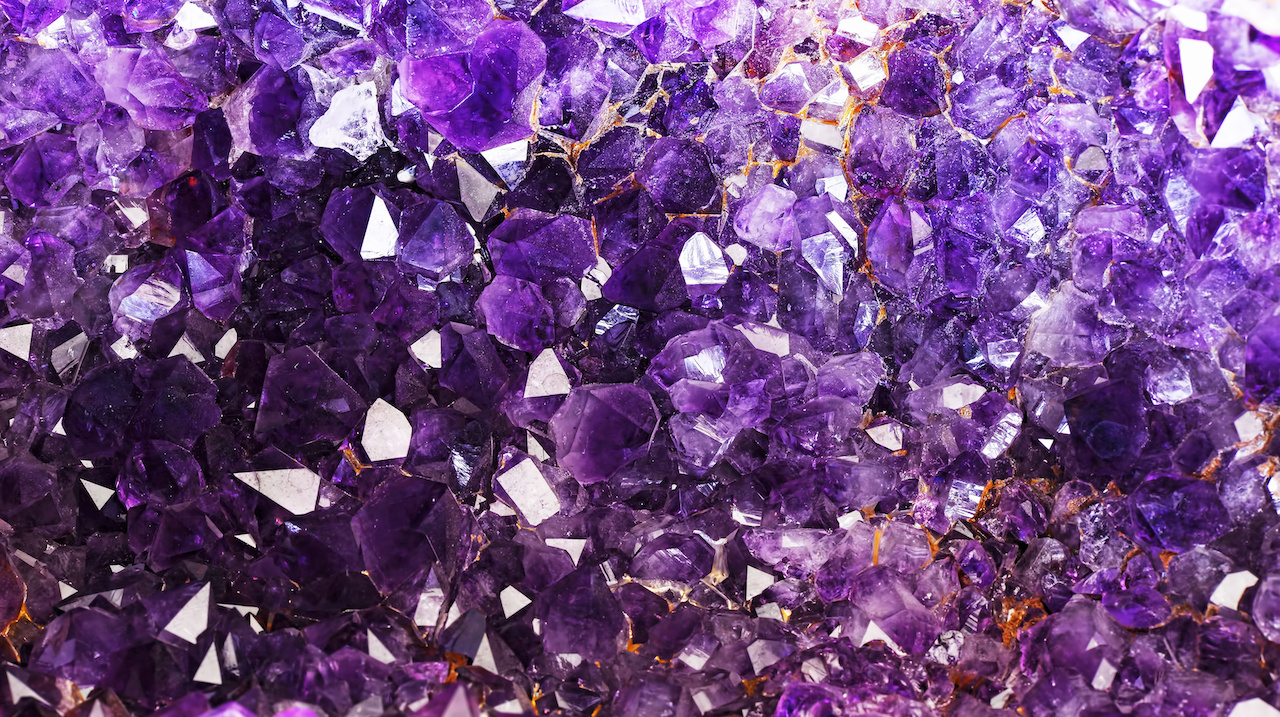
In conclusion, Myanmar offers a unique travel experience for those seeking to explore a country rich in culture, history, and natural beauty. From the magnificent temples of Bagan to the peaceful waters of Inle Lake, Myanmar is a country that has much to offer. While there are some challenges to be aware of, such as the ongoing conflict in some areas and limited infrastructure in certain regions, hiring a local Burmese tour guide can provide a safe and enriching experience. Overall, Myanmar is a fascinating destination that is sure to leave a lasting impression on any traveler.
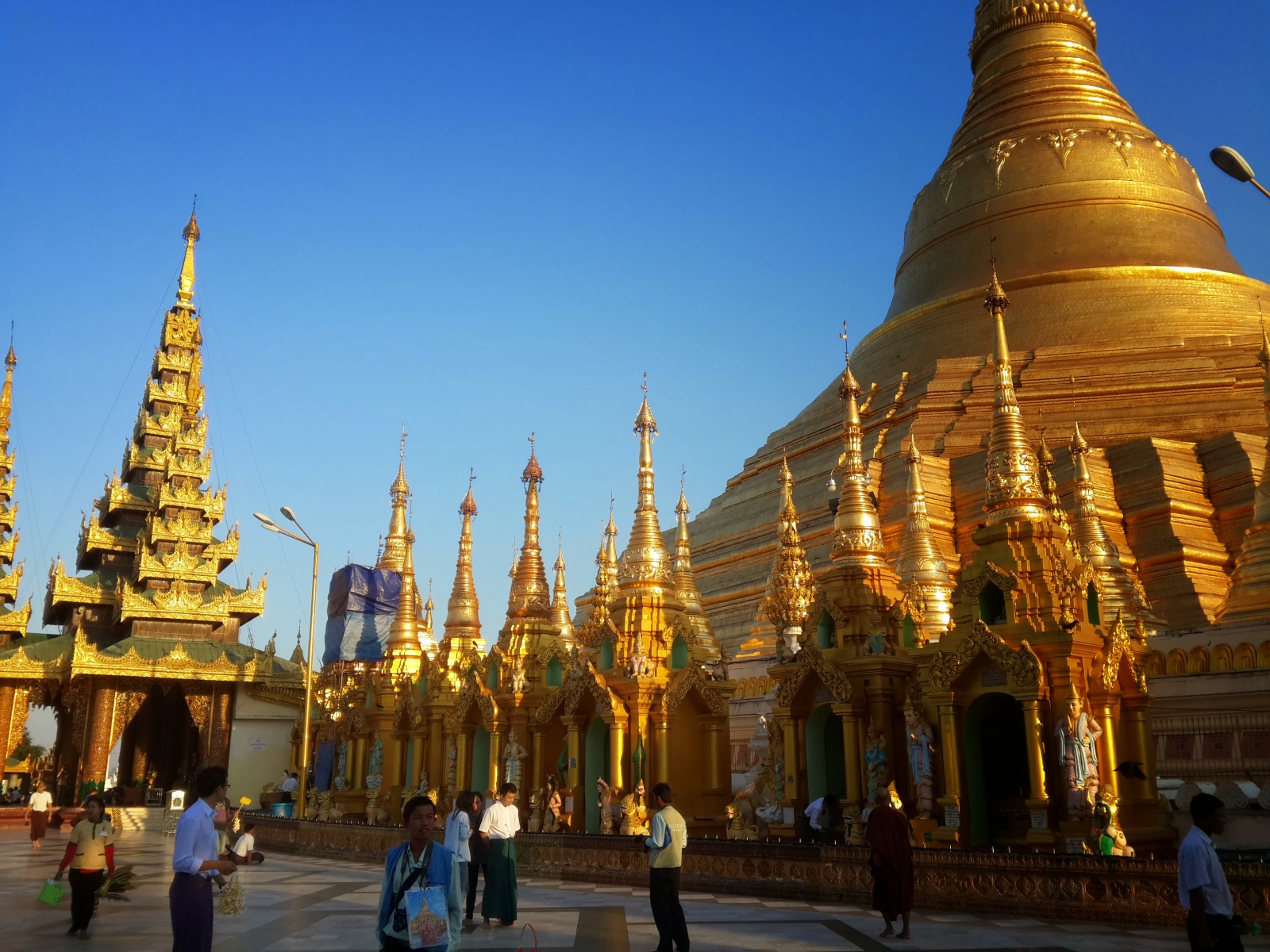
Read our previous article Hiking Among Giants: Exploring the Trails of Sequoia National Park
Read our next article Sacred Steps to Santiago de Compostela: The Culmination of the Way of St. James










